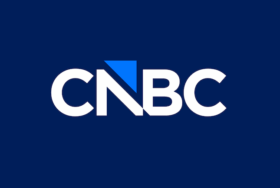 Will big agencies be the ruination of programmatic? Derek Mattsson, President of Placemedia, thinks it doesn’t have to be that way.
Will big agencies be the ruination of programmatic? Derek Mattsson, President of Placemedia, thinks it doesn’t have to be that way.
Programmatic TV advertising has yet to hit its stride, and already the industry is at risk.
The promise of programmatic is unquestionable; it’s a simpler, faster way to buy and sell TV inventory. The transactions can be consummated instantaneously and data-driven – attributes that appeal to both buyers and sellers of television time.
But for a few big agencies and advertisers, the promise of greener pastures doesn’t seem to be enough. For them, programmatic TV is often seen as an opportunity to drive down rates rather than create value and build potentially profitable longer term relationships.
It’s these same agencies and advertisers that are bogging down the demand side with multiple RFPs to different providers for the same campaign. Importantly, they’re scaring the supply side by creating channel conflicts and decreasing yield.
The result in this scenario is clear: Everybody loses.
Why not throw orders into the wind and see who comes back with the lowest price – but using this tactic with programmatic TV might very well ruin the industry before it gets going.
We owe advertisers and publishers more, not less. The real promise of programmatic TV is the ability for advertisers to use technology to expand the reach of their target audiences through the use of big data and better targeting and for the supply side to realize incremental value and better yield by aggregating audiences that were previously undervalued.
If we, as an industry, can use automation, data and aggregation to efficiently connect advertisers with MVPDs, cable and broadcast networks and local broadcasters, everybody wins.
Today, I’d like to challenge our industry – our clients, partners, friends and competitors alike – to stand up and give programmatic TV a chance. If done right, this industry can significantly improve advertising for both the demand and supply sides.
To get there, I recommend implementing a simple set of guidelines:
Real Audience Measurement Standards: Implement real audience measurement standards, to solve the problem of audience fragmentation for advertisers while protecting rates for the supply side.
Honest and Accurate Reporting: Agree on more honest and accurate reporting, to build trust with advertisers and suppliers.
The more transparent we can be as an industry with measurement and reporting, the greater chance we have of creating confidence and success rather than skepticism and doubt.
Automate Intelligently: Despite all the talk about programmatic, there is still very little of the automation necessary to capitalize on the opportunity. If we want to bring value, we need to make it easier for everybody to do business; this requires a higher level of automation.
That being said, programmatic doesn’t portend the end of human involvement in ad buys. We’ll always need a human’s perspective and analysis to ensure that a buying strategy can be refined. The automation process is there to make it easier for people to execute the transaction. A machine can only see in black and white, but we need human input to interpret the grey in between.
Create Rules and Controls that Work: Television, in contrast to the Internet, isn’t the wild, wild West. If we expect a programmatic ecosystem in television to work and be sustainable, we need to create a set of controls and rules that work for the players today and tomorrow. That means the industry needs to avoid channel conflicts, respect content owners and give advertisers access to the audiences they desire.
The programmatic TV industry holds so much promise, if we just give it a chance. Let’s not step over dollars to pick up pennies. Let’s build an industry that succeeds by creating value for everyone as opposed to just creating a lower rate opportunity for a couple of advertisers.
The Cynsiders column is a platform for industry leaders to reach out to colleagues, followers, and the public at large. In their own words and in targeted Q&As, columnists address breaking news, issues of the day, and the larger changes going on in the ever-evolving world of television, video and digital. Cynsiders columns live on Cynopsis’ main page and are promoted across all daily newsletters. We welcome readers’ comments, queries, and column ideas at Lynn@Cynopsis.com.







